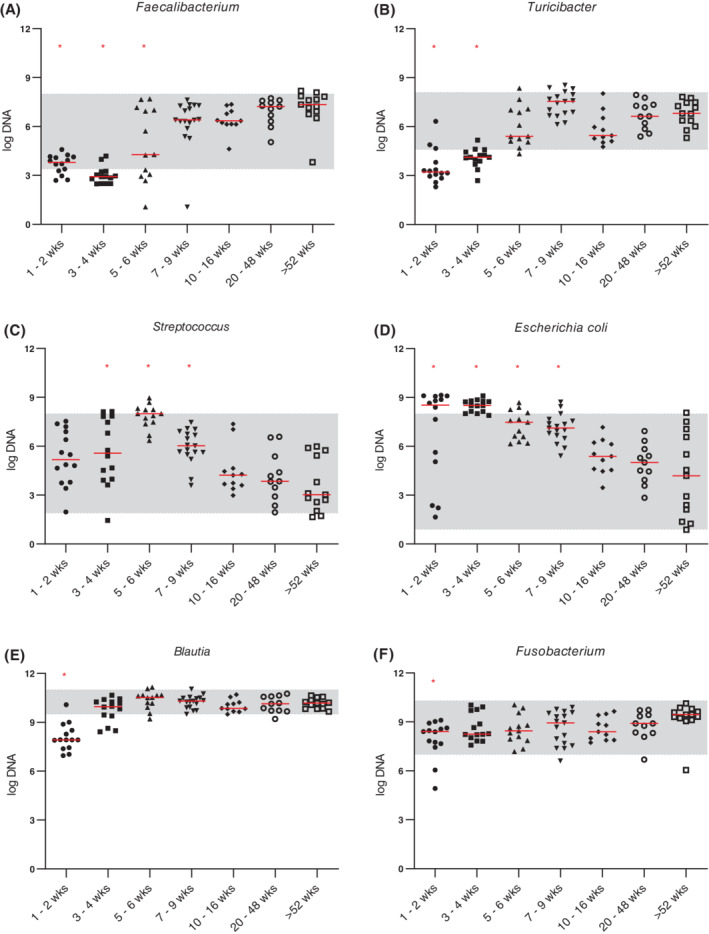FIGURE 2.

Abundances (log DNA) of bacterial groups included in the dysbiosis index for dogs age 1 to 2 weeks (n = 14), 3 to 4 weeks (n = 14), 5 to 6 weeks (n = 13), 7 to 9 weeks (n = 17), 10 to 16 weeks (n = 11), 20 to 48 weeks (n = 11), and adult dogs (ie, dogs >52 weeks of age; n = 13). A, Abundance of Faecalibacterium was significantly decreased in dogs age 1 to 2 weeks (P < .001), 3 to 4 weeks (P < .001), and 5 to 6 weeks (P = .02) when compared to adult dogs. B, Abundance of Turicibacter was significantly decreased in dogs age 1 to 2 weeks and 3 to 4 weeks (both P < .001) compared to adult dogs. C, Abundance of Streptococcus was significantly increased in dogs age 3 to 4 weeks (P = .03), 5 to 6 weeks (P < .001), and 7 to 9 weeks (P = .007) compared to adult dogs. D, Abundance of Escherichia coli was significantly increased in dogs age 1 to 2 weeks (P = .005), 3 to 4 weeks (P < .001), 5 to 6 weeks (P = .02), and 7 to 9 weeks (P = .03) compared to adult dogs. E, Abundance of Blautia and, F, Fusobacterium was significantly decreased in dogs 1 to 2 weeks of age (P < .001 and P = .003, respectively) compared to adult dogs. Red lines indicate medians and red asterisks indicate significance in comparison to adult dogs (P < .05). Shaded areas correspond to reference intervals. wks, weeks
